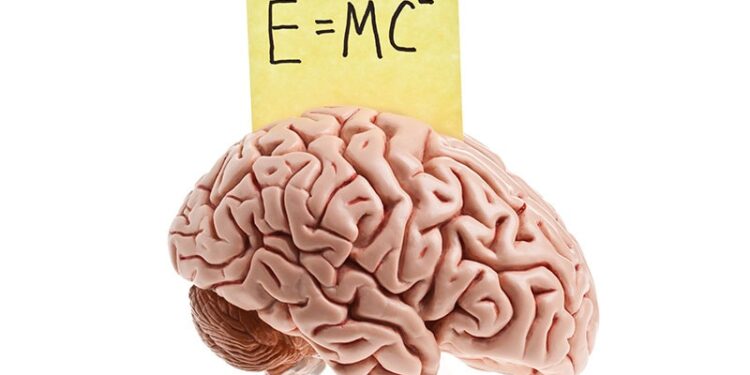Across cultures and eras, human remains have held powerful spiritual and symbolic significance.
The ancient Egyptians believed that mummifying a king’s body ensured his ascent to the gods. The preserved corpse — called the Ach (Egyptian for “shining” or “spirit”) — entered a sarcophagus symbolizing the womb of Nut, the sky goddess.
The belief in the enduring power of human remains has persisted throughout history. In early Christianity, Western Europe venerated the relics of saints, including Christ’s foreskin and John the Baptist’s skull. By the 19th century, European physicians began preserving and studying organs from notable individuals.
From strands of Muhammad’s beard to Adolf Hitler’s jaw and Buddha’s teeth, this part IV of this series focuses on the brain of the genius Albert Einstein.
The Brain Quest
“Are you Dr Harvey?” The man’s voice on the line sounded hopeful and almost anxious. “The same Harvey at Princeton Hospital in the 1950s?”
Harvey hesitated. His name was Thomas Stoltz Harvey (1912-2007), a once-promising pathologist who had studied at Yale School of Medicine, New Haven, Connecticut, in what he would describe as one of the “greatest disappointments of his life.”
In those days, a smooth academic path was rare, even within the medical field.
But was he still the same man he had been two decades earlier? No one could say for sure.
“Yes,” he heard himself reply. “What’s this about?”
The caller introduced himself as a journalist for the New Jersey Monthly. He stated that he had been investigating the whereabouts of a missing organ for months on behalf of his editor in chief.
On April 18, 1955, the world-renowned physicist Albert Einstein (1879-1955) died at Princeton Hospital, Princeton, New Jersey, from a ruptured abdominal aortic aneurysm. In accordance with his wishes, his body was cremated, but not entirely. According to sources, both his eyes and brain had been removed beforehand.
Although the timing of the call caught Harvey off guard, the reason behind it did not. He had been the on-call pathologist that night, assigned to perform the postmortem examination on Einstein’s body — more than 20 years earlier.
More than two decades earlier, he had removed Einstein’s organs.
However, on that early morning in 1955, as the body of one of the most influential scientists in human history lay before him on the autopsy table, Harvey felt something shift. The man who had dismantled the absoluteness of time and space through pure thought — who had done in theory what once seemed to be the domain of the divine — now lay still. Harvey believed that the secret to understanding human genius might lie just beneath a layer of skin, muscle, connective tissue, and bone.
Decades later, in a 1978 interview with New Jersey Monthly, Harvey claimed that Einstein wanted his brain to be studied. However, according to more recent research by National Geographic, the removal of the organ was never authorized. Context mattered too: During the Cold War, Harvey may have felt an urgency to preserve the brain — not just for science, but for his country.
Albert Einstein’s eldest son, Hans Albert Einstein (1904-1973), was informed only after the removal. He eventually gave permission for the brain to be studied but insisted that the findings should not be sensationalized.
What is certain is that Harvey expected sensational results from his study of Einstein’s organs. Hoping for a career boost — and perhaps a legacy for Western science — he injected 50% formalin into Einstein’s internal carotid artery, removed the brain, and placed it in 10% formalin solution. He then divided the cerebrum and prepared thin slices. He gave Einstein’s eyes to Henry Abrams (1911-2009), a long-time ophthalmologist.
Harvey smuggled preserved brain slices and tissue fragments out of Princeton Hospital in jars, a decision that cost him nearly everything: his job, medical license, marriage, and — on more than one occasion — his home.
Scientific Ambitions
The extent of Harvey’s scientific ambitions is reflected in the meticulousness with which he prepared Einstein’s brain.
As soon as he removed the brain, he documented it thoroughly, photographing it from every angle alongside a tape measure in almost criminological detail. He weighed it and cut it into 170 or approximately 240 pieces, depending on the source. He had thousands of histological sections made, grouped them into 12 sets, and kept two of them for himself. He kept two sets and shared the rest with experts who he believed had a better understanding of the brain regions.
About 23 years later, when a New Jersey Monthly journalist came calling, key test results were still missing. Perhaps still hoping for a breakthrough — and a return to scientific legitimacy — Harvey finally admitted that he was the one who had the missing brain.
However, 70 years after Einstein’s death, neither the breakthrough nor the redemption has ever come. The quest to find a neurological basis for human genius has produced more questions than answers to date.
The Genius Puzzle
In 1999, a team of researchers from McMaster University, Hamilton, Ontario, Canada, reported in The Lancet that Einstein’s brain lacked a structure known as the parietal operculum. They suggested that this unusual anatomical feature may have enhanced neural communication, thus explaining Einstein’s distinctive way of thinking.
However, this conclusion was based exclusively on photographs taken by Harvey. Prof Laurie D. Hall of Cambridge University, Cambridge, England, criticized the claim, saying that “to suggest a definitive connection between this anomaly and Einstein’s cognitive performance” was “over the top.” He argued that modern imaging technologies, such as MRI, are necessary to draw valid conclusions.
Evidence suggested that Einstein may have enhanced interhemispheric connectivity. Einstein’s corpus callosum was a veritable superhighway of connectivity, researchers reported in the journal Brain. Not only was it thicker in most subregions than the corpus callosum of 15 healthy older men, but it was also thicker at five key fiber crossings through the regional callosal cross-section area than those of 52 young, healthy men.
Research led by Dahlia Zaidel at the University of California, Los Angeles, found that Einstein’s hippocampus had larger neurons on the left side than on the right. Zaidel concluded that his left hemisphere may have had stronger neural connections to the hippocampus and neocortex, potentially supporting detailed, logical, and innovative thinking in him.
In the 1980s, Marian Diamond and colleagues at the University of California, Berkeley, reported another unusual feature: Einstein’s brain had more glial cells overall, especially in the inferior parietal lobe. However, the control group of 11 brains from individuals with average cognitive ability was too small and poorly matched for statistically valid conclusions.
Conclusion
Neurologist Terence Hines of Pace University Westchester, White Plains, New York, believed that previously published studies on Einstein’s brain share the same flaws as Diamond’s early research. In his view, the findings were distorted by the researchers’ prior expectations of finding noteworthy results.
Every brain is unique. With close examination, some features always appear unusual. Therefore, linking such differences to a specific trait, such as Einstein’s intelligence, is unreliable.
This may also explain why studies of other highly gifted individuals, such as Carl Friedrich Gauss (1777-1855) and Sofia Kovalevskaya (1850-1891), have not revealed any common anomalies.
Finding a neurologic basis for genius is difficult because of unrealistic expectations and limitations of current research methods. It is like searching for a new bone in a sprinter’s body when the real differences lie in muscle fibers, enzymes, and many genes working together.
The common belief that a person’s success is mainly due to divine gifts or natural talent may be mistaken. Differences that seem important from a human perspective may fade when viewed in a larger context, as other genetic and environmental factors work to balance their effects.
As Einstein said in another context, individual traits have both strengths and weaknesses that balance over time and create harmony.
Thus, the saying “he [up there] doesn’t roll the dice” can be understood as a metaphor for the careful, balanced way human traits are distributed.
Read the previous parts of the series:
This story was translated from Univadis Germany.
Source link : https://www.medscape.com/viewarticle/behind-icons-iv-genius-code-einsteins-brain-2025a1000i6i?src=rss
Author :
Publish date : 2025-07-09 11:31:00
Copyright for syndicated content belongs to the linked Source.










